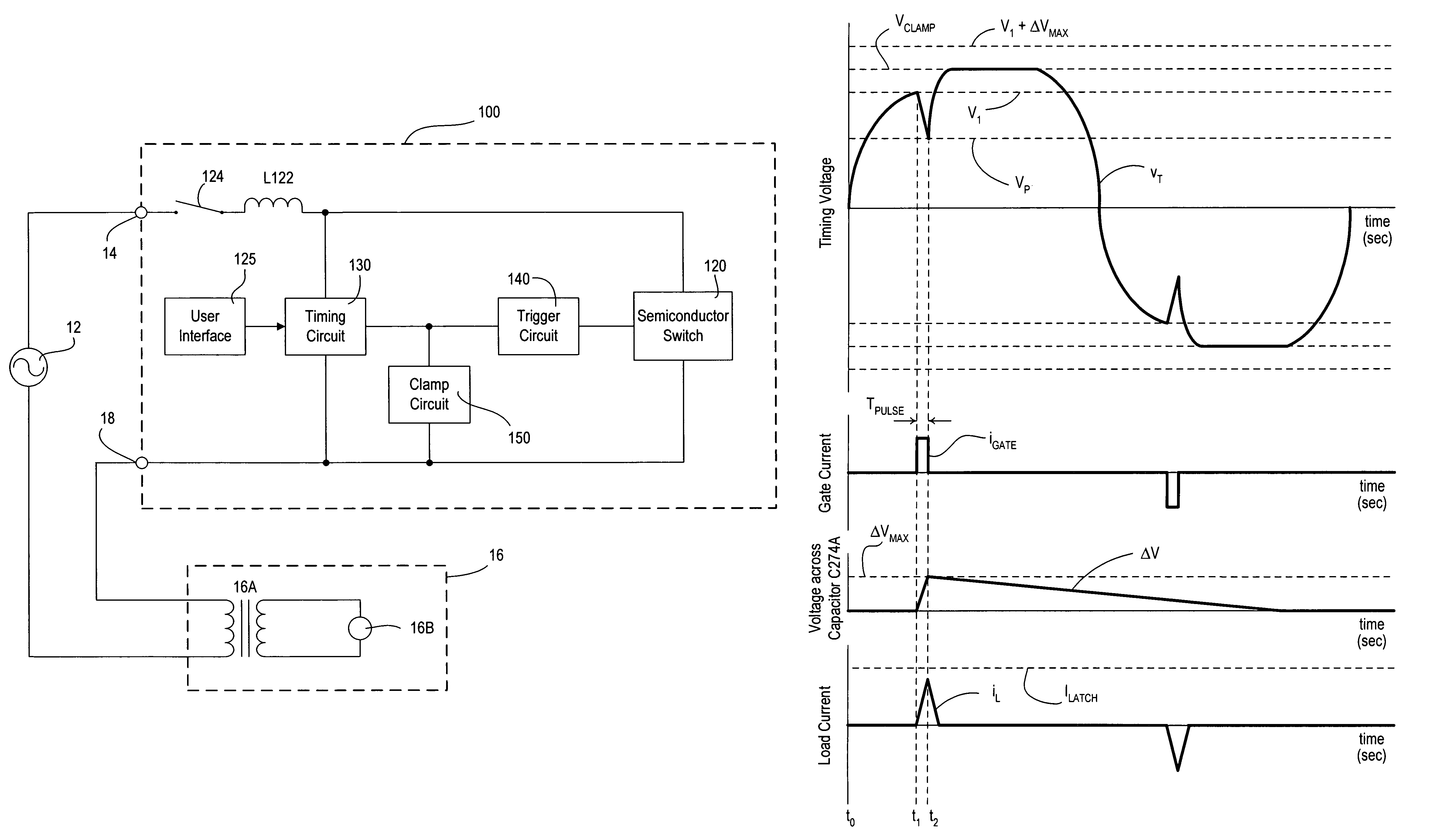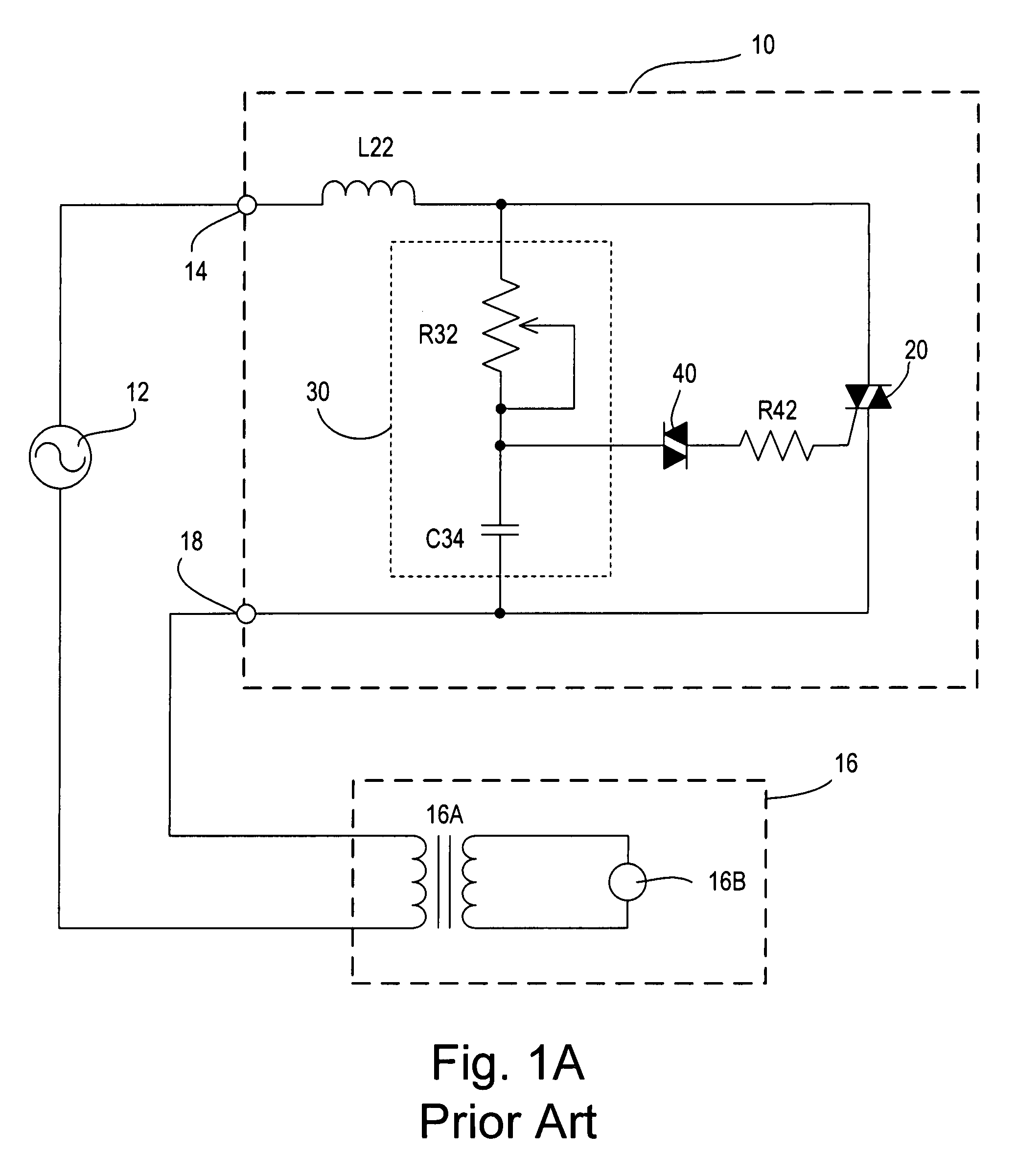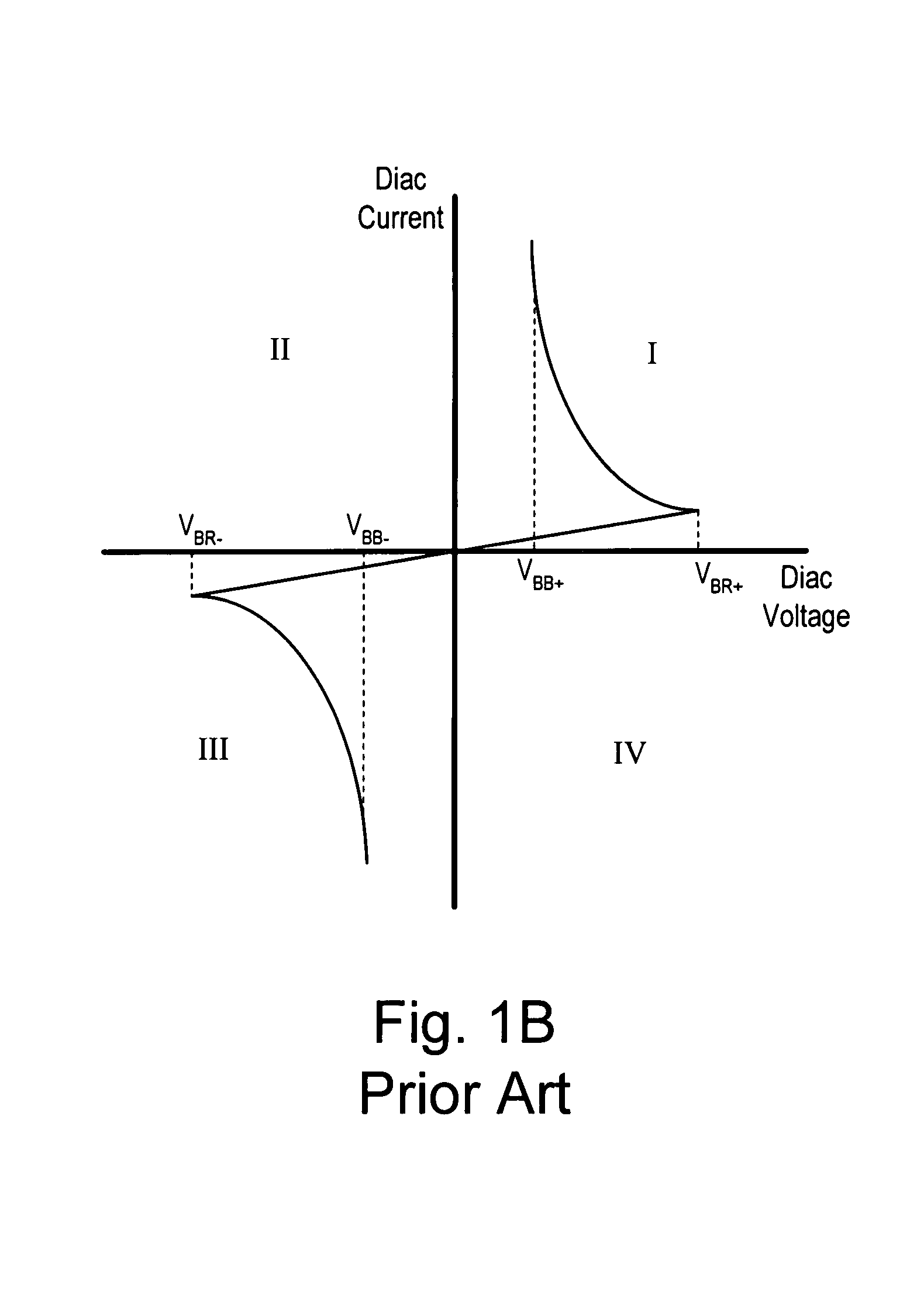Method and apparatus for preventing multiple attempted firings of a semiconductor switch in a load control device
a load control device and semiconductor technology, applied in the direction of power conversion systems, instruments, light sources, etc., can solve the problems of increasing the temperature of the transformer, affecting the operation of the transformer, and affecting the operation of the mlv transformer,
- Summary
- Abstract
- Description
- Claims
- Application Information
AI Technical Summary
Benefits of technology
Problems solved by technology
Method used
Image
Examples
first embodiment
[0040]FIG. 6 is a simplified schematic diagram of an MLV dimmer 200 according to the present invention. The MLV dimmer 200 comprises a triac 220 having a pair of main terminals coupled in series electrical connection between the AC power source 12 and the MLV load 16. The triac 220 has a control input, i.e., a gate terminal, for rendering the triac 220 conductive. The MLV dimmer 200 further comprises a timing circuit 230 coupled in parallel with the main terminals of the triac 220 and comprising a potentiometer R232 in series with a capacitor C234. A timing voltage signal vT is generated at an output, i.e., the junction of the potentiometer R232 and the capacitor C234, and is provided to a trigger circuit 240. The resistance of the potentiometer R232 may be varied in response to the actuation of a slider control of a user interface of the dimmer 200 (for example, the slider control 128 of the user interface 125).
[0041]The trigger circuit 240 is coupled in series electrical connectio...
second embodiment
[0047]FIG. 8 is a simplified schematic diagram of an MLV dimmer 300 according to the present invention. The MLV dimmer 300 includes a triac 320 in series electrical connection between the HOT terminal 14 and DIMMED HOT terminal 18 and a timing circuit 330 coupled in parallel with the triac. The timing circuit 330 comprises a potentiometer R332, a capacitor C334, and a calibrating resistor R336. The timing circuit operates in a similar manner to the timing circuit 230 of the MLV dimmer 200 to produce a timing voltage signal vT at an output.
[0048]The MLV dimmer further includes a rectifier bridge comprising four diodes D342A, D342B, D342C, D342D; a trigger circuit comprising a break-over circuit 360 and an offset circuit 370; a current limit circuit 380; and an optocoupler 390. The break-over circuit 360, the current limit circuit 380, and a photodiode 390A of the optocoupler 390 are connected in series across the DC-side of the rectifier bridge. The offset circuit 370 is connected su...
third embodiment
[0056]FIG. 10 is a simplified schematic diagram of an MLV dimmer 400 according to the present invention. The dimmer 400 includes the same or very similar circuits as the MLV dimmer 300. However, the circuits of FIG. 10 are coupled together in a different manner.
[0057]The MLV dimmer 400 includes a clamp circuit 450, which is coupled across the photodiode 390A of the optocoupler 390, the break-over circuit 360, and an offset circuit 470 rather than across the AC-side of the rectifier bridge as in the MLV dimmer 200. During the positive half-cycles, a capacitor C474A in the offset circuit 470 charges to a voltage ΔV, thus increasing the voltage threshold VTH to the voltage ΔV plus an initial voltage threshold V1. Once again, the voltage ΔV across the capacitor C474A is substantially zero volts at the beginning of the positive half-cycles, and thus, the initial voltage threshold V1 is equal to the break-over voltage VBR, e.g., approximately 30V, of the break-over circuit 360 plus the ad...
PUM
 Login to View More
Login to View More Abstract
Description
Claims
Application Information
 Login to View More
Login to View More - R&D
- Intellectual Property
- Life Sciences
- Materials
- Tech Scout
- Unparalleled Data Quality
- Higher Quality Content
- 60% Fewer Hallucinations
Browse by: Latest US Patents, China's latest patents, Technical Efficacy Thesaurus, Application Domain, Technology Topic, Popular Technical Reports.
© 2025 PatSnap. All rights reserved.Legal|Privacy policy|Modern Slavery Act Transparency Statement|Sitemap|About US| Contact US: help@patsnap.com



